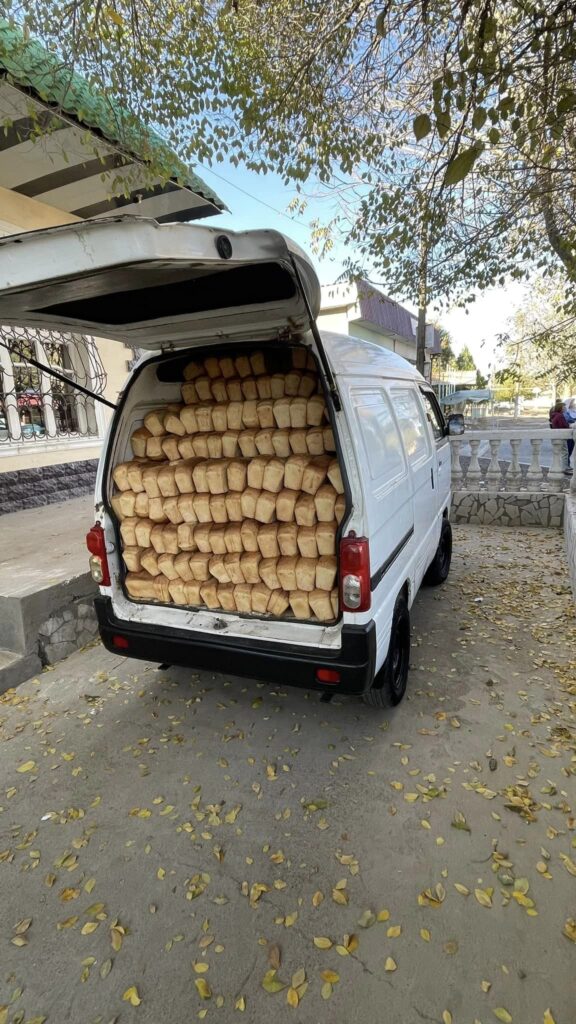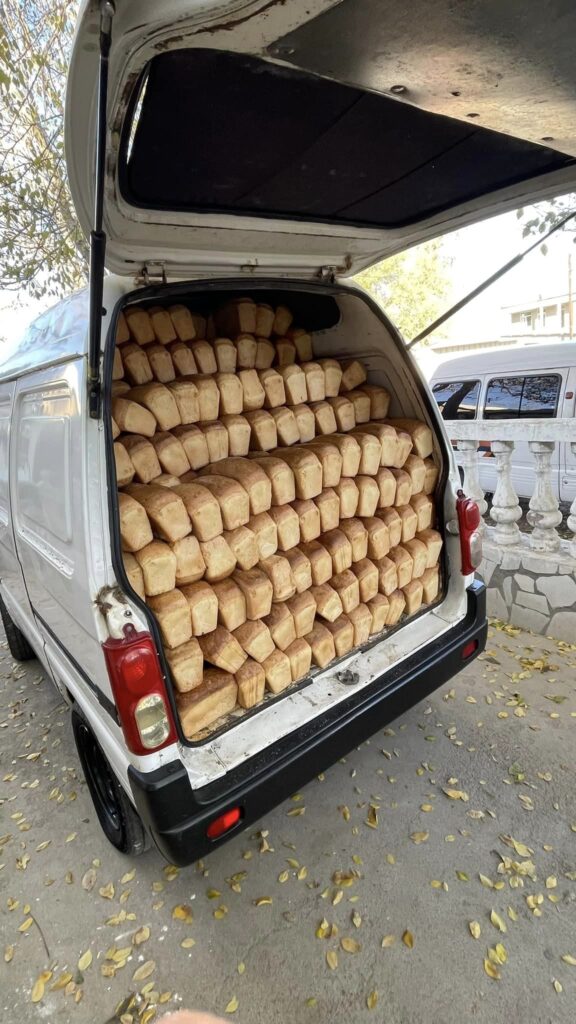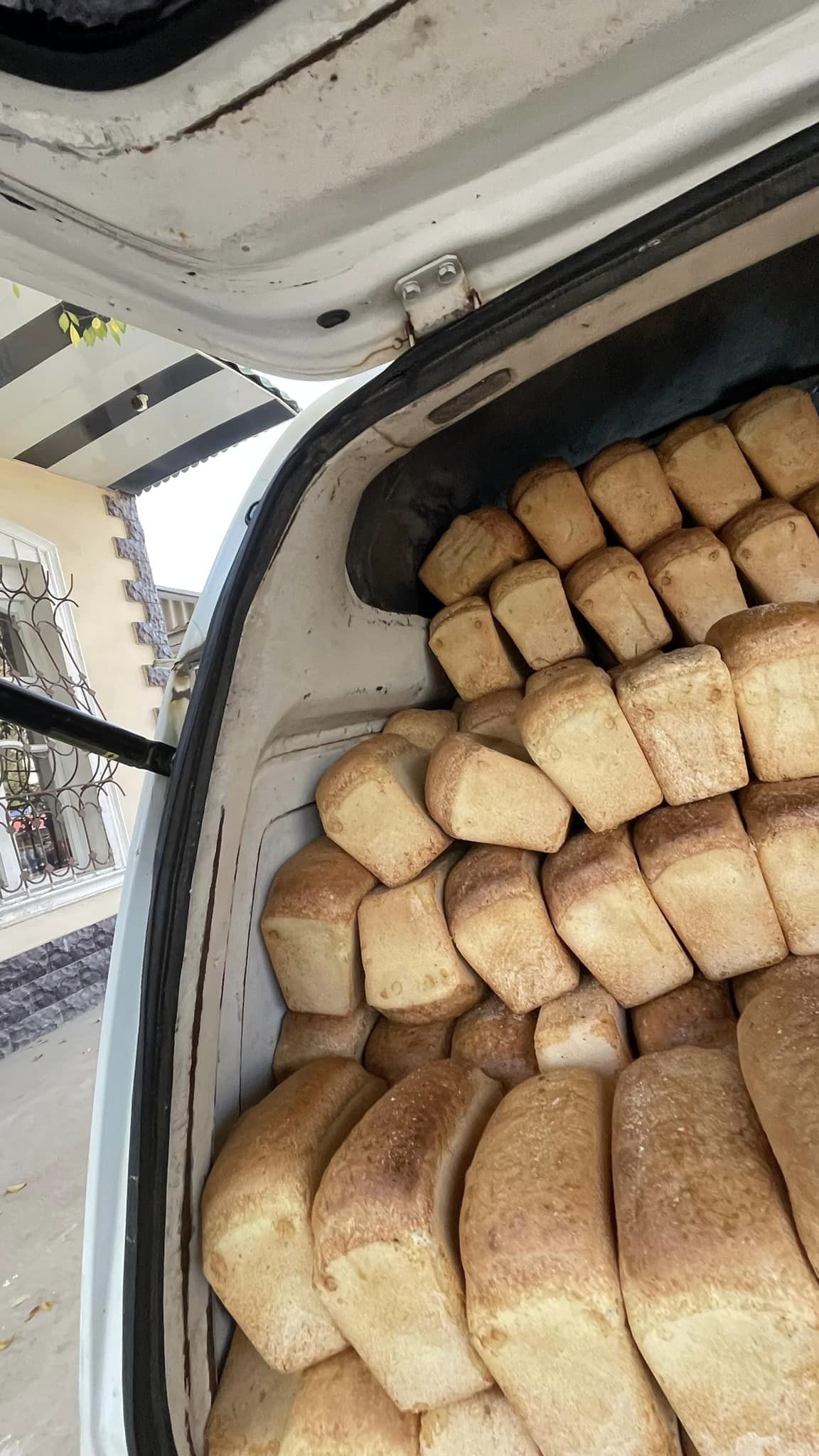This article is also available in:
Русский (Russian)
Uzbek
Bread is not just food; it is one of the main symbols of life and a staple in many cultures. In Uzbekistan, bread holds a special place on every table. But the way it is currently transported and stored causes real outrage and concern. It’s frightening to imagine that what was once one of the most sacred products is now delivered to stores in conditions that put the health of millions of people at risk. Dirty car trunks, old and torn rags that belong in the trash, and no protection for the bread — this is the reality faced by residents of Tashkent and other cities.
How does this happen?
In Soviet times, bread was transported in specially equipped vehicles that ensured maximum sanitary conditions: pallets, where the bread lay, touched only metal hooks, avoiding contact with dirty surfaces. But what do we see today? Bread is transported in dirty “Damas” vans or in the trunks of passenger cars, where it is laid on old “kurpachas” (traditional mats) covered with another dusty rag. Often, the bread isn’t covered at all — it just lies in the trunk, in completely unsanitary conditions. This is horrifying, and rightfully so: how can it be considered normal for the food we eat every day to be transported like this?
One user of the community “Potrebitel.uz” shared photos taken in the Tashkent region, showing how bread is transported in the dirty interior of a “Damas” van.


“Sometimes, the bread isn’t even covered, it’s just lying in the trunk, or it’s transported in old cardboard boxes from bananas,” she wrote indignantly.
Not only is bread transported in such conditions, but the people who unload it do so without gloves. They literally handle dozens of loaves with their bare hands, transferring them from dirty vehicles into equally dirty stores. And shoppers calmly come, touch several loaves with their dirty hands before choosing the “freshest” one, as if this is normal. But it’s absolutely not.
Forgotten Standards
Many customers today remember the strict Soviet standards in this field. Back then, bread was transported only in special vehicles where it was reliably protected from dirt. Sellers in bread shops wore white coats and hats, and customers used a special fork to pick up loaves without touching them. Everything was well thought out, and no one worried that bread could be a source of illness or infection.
Today, however, these standards seem forgotten. It’s as if we’ve gone back decades, treating sanitary norms as nothing more than formalities. Yet, the question is about the health of millions of people. Bread soaked in the dirt of a trunk or touched by dozens of hands in a store becomes a real danger for consumers.
Why is this happening?
There are many reasons for this terrible situation. The first and most obvious is cost-cutting. Private entrepreneurs try to minimize transportation costs by using their personal vehicles instead of specialized trucks. It’s understandable — large bread trucks are expensive, and small businesses can’t always afford the extra expense.
Another issue is the lack of proper oversight by the authorities. Bread is a basic product that should be under strict sanitary supervision. But in practice, control seems minimal, or absent altogether. No one is checking how bread is transported and stored in shops.
Many stores continue to store bread in unacceptable conditions. The shelves where bread is placed are often dirty and located at foot level, making the product even more vulnerable to contamination. Even worse, customers add fuel to the fire by carelessly touching multiple loaves until they find “the one.” Many people’s hands, after public transportation or shopping, are far from clean, adding another layer of unsanitary conditions.
Some argue that this unsanitary handling is the reason for the low price of bread.
“If bread were delivered in clean bags and in good conditions, prices would double,” users write online.
But is it worth saving at the cost of health? In these conditions, as experts point out, it’s easy to catch an infection, whether it’s E. coli or something more serious, like hepatitis.
How to address this problem?
There are several solutions, and they are clear:
- Strengthening government control: Sanitary services must strictly monitor how bread is transported and stored. It’s time to bring back the old standards that ensured product safety.
- Educational campaigns for entrepreneurs and consumers: Many people are simply unaware of how important hygiene is when transporting and storing bread. Both sellers and buyers need to be informed about how to properly handle this product without risking their health.
- Penalties for violations of sanitary norms: Entrepreneurs who violate transportation and storage rules must be held accountable. Imposing fines and penalties for such violations could be an effective way to combat unsanitary conditions.
- Introducing modern packaging technologies: It’s essential to explore the possibility of widespread adoption of modern bread packaging methods. If bread is delivered to stores in packaging, it will significantly reduce the risk of contamination and increase product safety for consumers.
Many social media users are already calling for a return to the old system, where bread was transported in special vehicles and stores used forks for selecting loaves. This isn’t just nostalgia for Soviet times — it’s about caring for the health and well-being of millions of people. In a country where bread is a staple for many, especially in Uzbekistan, we need to take seriously how this product gets to our table.
Safety must come first, and it’s time to clean up this mess to ensure that every piece of bread is not only delicious but safe.
The article may contain inaccuracies as it is translated by AI. For more details, please refer to the Russian version of the article. If you notice any inaccuracies, you can send corrections via the Telegram bot: Uzvaibik_bot.

